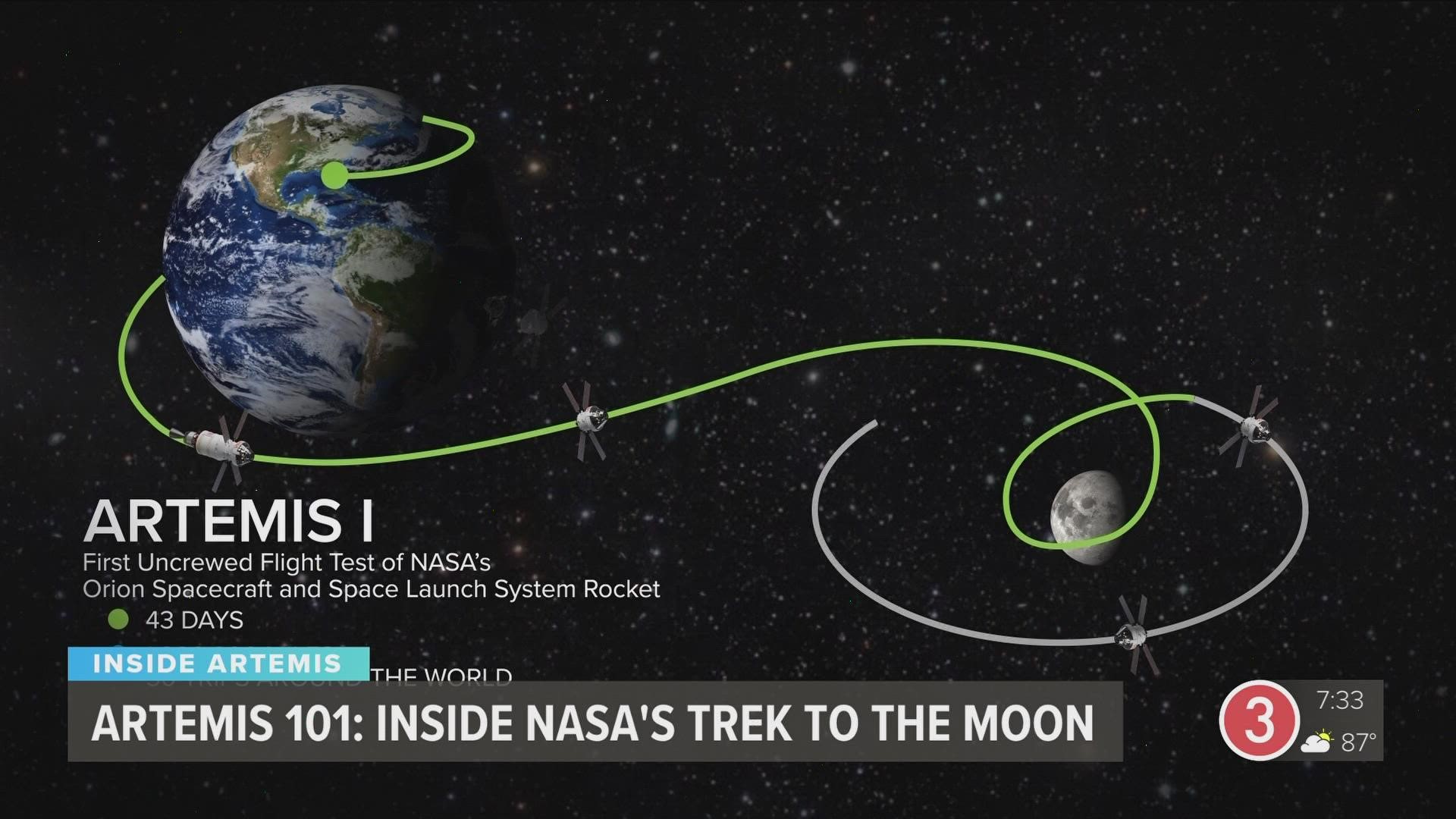CAPE CANAVERAL, Fla. — Artemis One is the first in an increasingly complex series of missions to take humans deeper into space than ever before. But this first test flight of NASA'S next generation hardware and software is a critical first step to getting there.
Artemis is the Greek Goddess of the moon and twin sister to Apollo. And as the namesake for NASA'S new deep space exploration program - it's a nod to where we're going - and where we've been.
"And to all of us that gaze up at the moon dreaming of the day humankind returns to the lunar surface, folks we're here and we are going back and that journey, our journey, begins with Artemis One," said NASA Administrator Bill Nelson.
Artemis One: the first flight bringing together the most powerful rocket in the world, with a new human space capsule, and all the upgraded infrastructure back here on earth, to make it a success.
NASA built this mission on a solid foundation of know-how – creating more power, more technology and more capability to propel us father from earth, than ever before!
There are four objectives with this un-crewed first flight:
Priority one is making sure the Orion space capsule returns safely. It is no small feat. Orion will be coming in faster and hotter than any human-capable spacecraft before -- reaching speeds up to 25-thousand miles per hour and temperatures up to 5,000 degrees.
Engineers will closely follow how Orion's heat shield performs. Its re-entry conditions are so extreme - no facility on earth can recreate them. This will truly be a "one-of-a-kind" test.
The next priority: retrieving the Orion capsule after splashdown. Nothing will give engineers better information for how Orion performed than the capsule itself. They will also retrieve the parachutes that slowed its descent through the atmosphere.
The third objective: testing out all that new gear.
From the launch pad - to the rocket system's precision timed separation, the capsule's navigation, and of course the return to earth -- every facet of hardware and software debuted in this new era of space exploration - will be scrutinized.
And of course, there is a lot of science packed in – even if people are not, and the experiments on board – from deploying mini-satellites to how intense radiation will affect electronics and future astronauts, there is more than just rocket science happening here.
On its 43-day journey - Artemis One will cover 1.3 million miles: equivalent to more than 50 trips around the world.
And this is just the critical first step of several -- with eyes set on a lunar outpost, and BEYOND in the next decade.
"Our eyes are focused – not on the immediate future where NASA will land the first woman and the first person of color on the moon – on these increasingly complex missions astronauts will lie and work in deep space and we will develop the science and technology to send the first humans to mars," Nelson said.
More Artemis 1 coverage:
- NASA gives update after Artemis 1 rocket launch scrubbed: 'It’s not going to fly until it’s ready'
- Artemis 1 rocket launch: The Northeast Ohio connections and hometown pride
- Artemis 1 crew capsule to return to Ohio for testing after moon mission
- WKYC to air 'Inside Artemis: To the Moon and Beyond' special with 3News' Betsy Kling at 7:30 p.m. tonight
- St. Ignatius coach Chuck Kyle named favorite teacher by Artemis 1 executive

